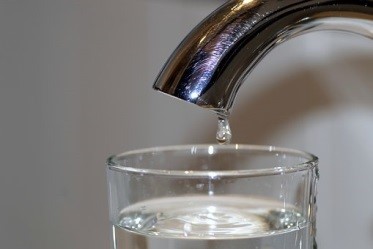Will a Reverse Osmosis System Help Prevent Lead Poisoning?
 You’ve probably heard the old saying “you are what you eat.” It seems logical – eat fattening foods, you get fat. Eat healthy foods, you get healthy … simple enough. Here’s another saying that’s true … “you are what you drink.” Drink clean, safe water and you get or stay healthy. Drink contaminated water, and you get … well, contaminated!
You’ve probably heard the old saying “you are what you eat.” It seems logical – eat fattening foods, you get fat. Eat healthy foods, you get healthy … simple enough. Here’s another saying that’s true … “you are what you drink.” Drink clean, safe water and you get or stay healthy. Drink contaminated water, and you get … well, contaminated!
Water contamination has long been a serious concern, especially when it affects our drinking water. Many people associate poor quality drinking water with third world nations, and not the United States. Since the Flint, MI water crisis, however, Americans are beginning to see that some of our own water supplies are not as clean and safe as we thought they were. Lead in drinking water, for example, continues to make headlines and be a cause of concern throughout the country.
How does lead get into your drinking water?
With today’s water treatment technology and the knowledge of the danger of lead poisoning, how exactly do we get lead in our drinking water in the first place? Don’t local governments test municipal water supplies, treat water for public consumption, and do their best to provide water that is safe to drink?
Yes, they do. It’s not enough to prevent lead contamination, however. Sometimes contaminants enter the water after it’s already been treated. If you had the best water in the world, it would become dirty and contaminated if you put it in a muddy bucket. The same thing happens with our water supply.
When water is transported from water treatment plants or individual wells, it passes through pipes. Today’s standard is for those pipes to be made of copper or PVC, but that wasn’t always so. Pipes used to be made from lead, and some copper pipes are even connected with lead solder. As these pipes corrode over time, lead leaches into the water that is then transported to our homes, schools, workplaces, etc. Lead pipes and connectors have gradually been replaced but some do still remain.
How do you know if lead is in your water?
Lead, like some other water contaminants, can be especially dangerous because it cannot be seen, tasted, or smelled. You might have a new house or an old house with new plumbing, and think you’re completely safe from lead contamination. This is not the case, however, if the pipes leading to the house have lead in them.
Communities with municipal water are required to periodically test their water for contaminants and release the test results to the public. This is a great start. The only way to know for sure that your water is safe, however, is to have the water coming from your own tap tested. We make it easy for you – contact us and get a free water test today so you can know for sure that you’re drinking safe water.
Dangers of lead poisoning from water contamination
You might be wondering why lead in water is such a problem. After all, hard water contains metals that aren’t always hazardous to your health, so what’s the big deal? The problem is that lead poisoning has been shown to lead to serious health issues, especially for pregnant women and children, but also for adults. Some common side effects of lead poisoning include:
- Brain damage
- Developmental delays
- Behavior problems
- Kidney disease
- High blood pressure
- And more …
Best way to remove lead from water
There’s no reason for you or your loved ones to suffer from lead poisoning due to contaminated water. If your water test reveals the presence of lead, the easiest way to remove it is through a reverse osmosis (RO) system. Distillation and carbon filtration are other acceptable methods to remove lead, but RO systems have become the most widely used due to their effectiveness, low energy and production cost, and ease of maintenance.
An RO system purifies water by pushing it through a series of filters. These filters allow water to pass through but contaminants, such as lead, are left behind. You’re left with clean water that is safe to drink and tastes great.
So, before you pour that next glass of water, contact us for a water test and RO system. Then, you can sit back, relax, and drink to your heart’s content!


